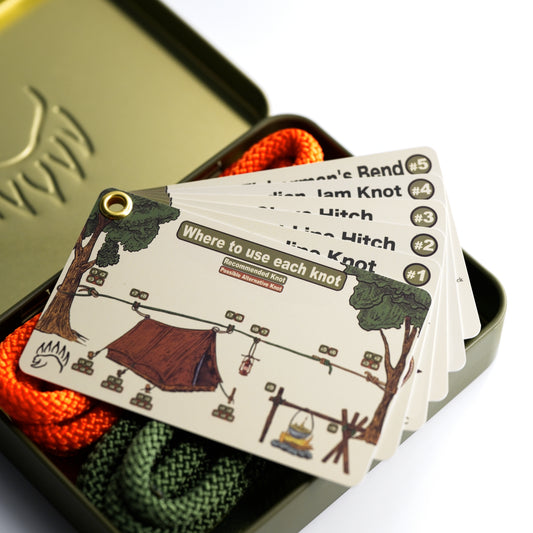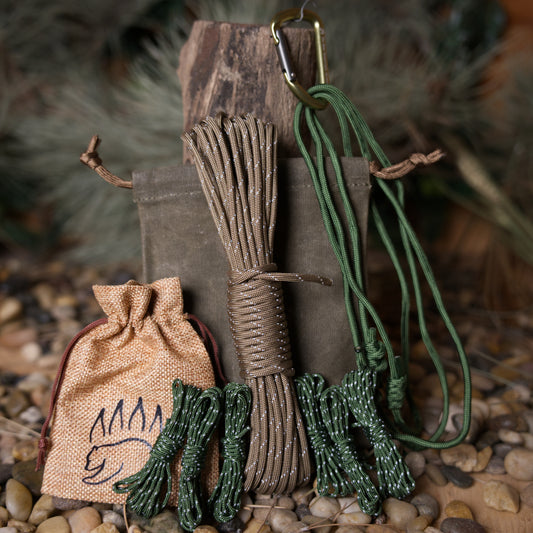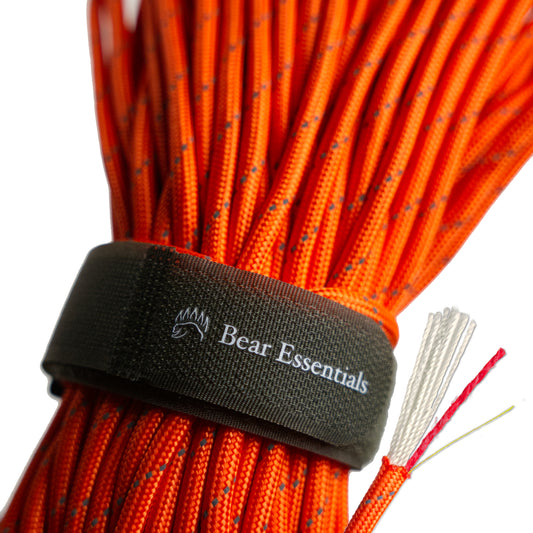How to Tie the Larks Head (Cow Hitch)
Usage
The Larks Head, also known as the Cow Hitch, is commonly used to attach a rope to a hook, ring, or pole in utility, fishing, and boating tasks. Compared to the Clove Hitch knot, which grips tighter but is harder to adjust, it’s quick to tie and release. Its advantage is simplicity, but it can slip under heavy or fluctuating loads. This knot is ideal for temporary ties, though it needs checking for security.
Why Learn the Larks Head (Cow Hitch)?
Its straightforward design makes it a go-to for fast, temporary attachments. This knot suits anyone needing a simple, versatile hitch for everyday tasks. It ties quickly, releases easily, and works in various settings with minimal rope.
Common Uses
-
Utility:
- Secures bundles or bags for transport.
- Attaches ropes to hooks for temporary holds.
-
Fishing:
- Connects lines to lures or hooks for quick setups.
- Secures nets or gear to boat fittings.
-
Boating/Marine:
- Ties ropes to cleats or poles for mooring.
- Attaches fenders to railings temporarily.
ABOK Number
(Ashley Book of Knots)
Other Names
Category
|
Notable Features
- Quick Tying: Forms in seconds for rapid setups.
- Easy Release: Unties effortlessly, even after light loads.
- Versatile Use: Works on hooks, rings, or poles in various settings.
- Minimal Rope: Requires little rope length for effective ties.
- Adjustable Fit: Easily repositioned before loading.
Variations
(No variations mentioned; section left blank.)
Similar Knots
Clove Hitch vs. Larks Head (Cow Hitch)
- Pros: Grips tighter and is more secure for sustained loads.
- Cons: Harder to adjust or untie compared to the Larks Head.
Timber Hitch vs. Larks Head (Cow Hitch)
- Pros: Stronger for logs or poles, with better grip under tension.
- Cons: Less versatile for hooks or rings than the Larks Head.
History
The Larks Head, also called the Cow Hitch, is documented in The Ashley Book of Knots (#1673), likely originating in maritime and agricultural contexts for quick rope attachments to poles or livestock. Its simplicity made it a staple in fishing and utility tasks, with modern uses in boating for temporary ties. The knot’s name reflects its resemblance to a lark’s head when looped.
Security Level
The Larks Head (Cow Hitch) is reliable for light to moderate loads when tied correctly, offering a quick and simple attachment. Due to its ability to slip under heavy or dynamic loads a half hitch backup or toggle is recommended for critical tasks. Regular checks ensure it remains snug, especially on smooth surfaces.
Downsides
- Slippage risk: Can loosen under heavy or fluctuating loads.
- Limited strength: Not suited for critical or sustained loads.
Structure
- Form a loop by doubling the rope or using a pre-made sling.
- Pass the loop over the hook, ring, or pole.
- Pull both ends of the rope through the loop, creating two parallel strands around the object.
- Tighten the knot by pulling both ends evenly to secure it.
- Check the knot for snugness and adjust if needed before loading.
Pro Tip: Use a doubled rope or sling for quicker tying and better grip.
FAQ
Is the Larks Head (Cow Hitch) strong enough for securing boat fenders?
Yes, for temporary fender ties, but add a half hitch for extra security.
What rope works best for the Larks Head (Cow Hitch)?
A strong, flexible rope like nylon ensures easy tying and decent grip.
How does the Larks Head (Cow Hitch) compare to the Clove Hitch?
It’s quicker to tie but less secure, especially under heavy loads.
Can the Larks Head (Cow Hitch) be used for fishing lures?
Yes, for light lures, but check for slippage during casting.
Why choose the Larks Head (Cow Hitch) over a slip knot?
It’s more adjustable and versatile for hooks or poles.
Important Notes on Safety
Common failure points include slippage or a loose loop. Always verify the knot is snug and the attachment point is stable before loading. Inspect the rope for wear before tying. Add a half hitch for critical applications. Practice tying in low-stakes settings first.







